| Date: 3/23/2007 | Time: 11:00 AM | Report ID: vantassel032307 |
| Property: Linden Ave. Portsmouth, VA 23704 |
Customer: removed for privacy |
Real Estate Professional: |
| Client Is Present: Yes | Age Of Home: 1900 | Weather: Clear |
| Temperature: Over 65 | Rain in last 3 days: No | Square feet: 3060 |
| Inspection type: Home Buyers Inspection | Structure type: 2 story single family residence | Occupancy: Property is occupied |
Reading this report - The report is broken down by each major system . At the beginning of each system section is an overview which describes what the inspector is required and not required to inspect (ASHI standards). The overview may also contain some general photos of that system. Then you will see the list the styles & materials identified for that system. Below that is the system components that are inspected. This is where the observations are reported along with any supporting photos. Also under each system component there is a general comment category which will contain one or more of the following: Satisfactory, Discrepant Item, Informational Disclosures, Maintenance Recommendations, Not Inspected.
Inspection issues or concerns are flagged and broken down to 3 categories: Defective (repair or replace), Informational Disclosures (environmental, material or safety concerns), Maintenance (recommended or preventative). Any problems that fall under these categories will also be listed in the
![]() General Summary and on the corresponding summary for that category. These itemized summaries help you quickly identify the nature of the problem and therefore your course of action.
General Summary and on the corresponding summary for that category. These itemized summaries help you quickly identify the nature of the problem and therefore your course of action.
Table of contents:
![]() Defect Summary - List of just Defects, Repair or Replace items.
Defect Summary - List of just Defects, Repair or Replace items.
Info, Safety & Disclosure Summary - List of just Safety issues and Informational Disclosures
Maintenance Summary - List of just Maintenance, issues, concerns and recommendations.
A thorough home inspection was completed at the subject property in accordance with ASHI standards. This is an antique Victorian era home (1900) that was renovated in 2004. The inspection reveals that though this home has some problems, they are not detrimental and overall its structure and systems are in generally sound condition. The type of items reported are typically found during many home inspections but should be reviewed and considered for correction as they are specific to this homes condition, safety and value.
Some of the items reported could be considered significant in terms of any cost associated with bringing to a level of good repair that is consistent with the overall general condition of this property.
Primary concerns are maintenance deferrals and poor conservation on exterior wood siding and elements, insulation, roof structural repairs, and foundation conservation. Please see report for details on all documented items.
 |  |
 |  |
 |  |
| GENERAL ROOF CONDITION: GOOD: Average condition& performance | ROOF INSPECTION LIMITATIONS: Typical inspection access | REMAINING SERVICE LIFE: Not applicable |
| ROOF AS SEEN FROM: Ground Attic& Eaves Binoculars | SYSTEM INSPECTED?: Yes | ROOF STYLES& DESIGN: Gable Hip |
| ROOF COVERING MATERIALS: SLATE or TILE: Vermont or Buckingham METAL: Standing seam | FLASHING MATERIAL: Galvanized Iron or Tin | SKY LIGHT (S): NONE |
| ACTIVE ROOF OR FLASHING LEAKS: No | GUTTERS& DOWNSPOUTS: None | ATTIC VENTILATION: None |
| Layers of shingles: one |
| 1.0 | ROOF COVERINGS Comments - Discrepant item, Repair or Replace, Preventative maintenance recommended | ||||||
|
|
Slate shingles are loose, slipping or missing in several areas. repair as needed.
Roof is sagged at left side between chimney and gable. See structure notes.( Picture 4 ) Where roof has sagged, some shingles are lifting, repair as needed.( Picture 4 ) Note: a large section of roofing was replaced with synthetic slate (vinyl). These shingles are already starting to lift. They will not perform the same as slate and will require monitoring for repairs.( Picture 5 )
|
| 1.1 | ROOF DECKING Comments - Informational notes and disclosures, Preventative maintenance recommended | |
|
|
Roof underlayment is deteriorating. This is the felt paper between the slate and wood decking. This can not be repaired without removal of slate. Monitor the roof decking periodically for any water or moisture intrusion.( Picture 1 )
|
| 1.2 | FLASHING or JOINT MATERIALS Comments - Satisfactory, Functional |
| 1.3 | GUTTERS, ROOF DRAINAGE SYSTEMS Comments - Not Present |
| 1.4 | SKYLIGHTS Comments - Not Present |
| 1.5 | VENTILATION Comments - Informational notes and disclosures, Not Present | ||
|
|
Roof structure is not ventilated. It is highly recommended that ventilation be installed to provide balanced air flow through attic. This will reduce extreme heat loads and will reduce trapped moisture the migrates from interior. Old homes that are renovated without proper attic ventilation are susceptible to condensation rot.
Note: existing vents are sealed windows.( Picture 1 ) The rear has been sealed with wood.( Picture 1 )
|
 | 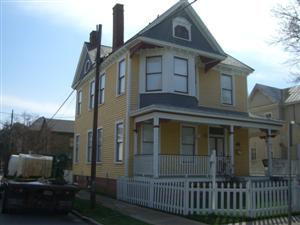 |
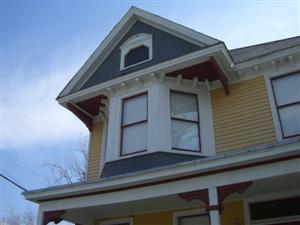 |  |
 | 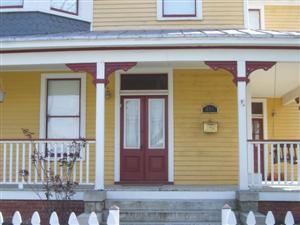 |
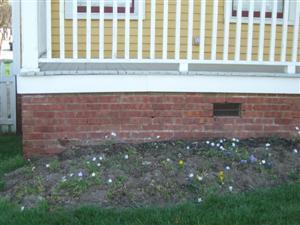 |  |
 |  |
 | 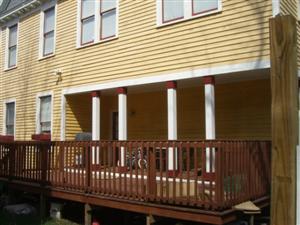 |
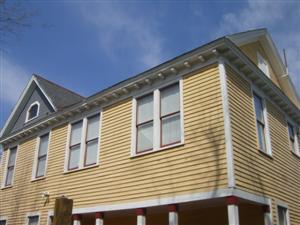 |  |
 | 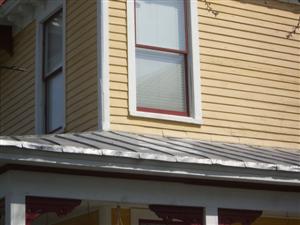 |
 |
| GENERAL CONDITION: EXTERIOR: FAIR: Below average condition& performance | SYSTEM INSPECTED?: Yes | EXTERIOR LIMITATIONS: Typical |
| SIDING MATERIAL: WOOD | EXTERIOR TRIM: WOOD | PRIMARY WINDOWS: DOUBLE-HUNG MATERIAL:WOOD |
| EXTERIOR ENTRY DOORS: WOOD | PORCHES AND OR DECKS: WOODEN PORCHES Wood Decking | STEPS AND OR RAILS: MASONARY STEPS WOODEN RAILS |
| FIRE ESCAPES: NONE | GARAGE AUTO OPENER: N/A | GARAGE DOOR MATERIAL: N/A |
| DRIVEWAY: STREET PARKING |
| 2.0 | WALL CLADDING FLASHING AND TRIM Comments - Discrepant item, Repair or Replace, Preventative maintenance recommended | |||||
|
|
Much of the clapboard siding is in need of maintenance/repair. Prior conservation was poorly done. Observed many loose boards where nails have deteriorated and let loose. paint is peeling and flaking. A significant amount of exterior wall preservation is needed.
|
| 2.1 | DOORS (Exterior) Comments - Satisfactory, Functional, Preventative maintenance recommended | |
|
|
Front door has poor weather seal.( Picture 1 )
|
| 2.2 | WINDOWS Comments - Discrepant item, Repair or Replace, Preventative maintenance recommended | |
|
|
Many of the window sills are weathered, deteriorating and holding moisture. Maintenance and conservation in general is needed.( Picture 1 )
|
| 2.3 | DECKS, BALCONIES, STOOPS, STEPS, AREAWAYS, PORCHES AND APPLICABLE RAILINGS Comments - Discrepant item, Repair or Replace | ||
|
|
Front porch flooring is in generally poor condition. deteriorating, some areas have rot. Repairs and maybe replacement should be considered.
|
| 2.4 | EAVES, SOFFITS, FASCIAS, RAKES, and EXTERIOR TRIM Comments - Discrepant item, Repair or Replace, Preventative maintenance recommended | |||||
|
|
Multiple areas of weathering, rot and deterioration where observed. Mostly small sections in multiple areas of window and porch trim. Repair or replace in all areas as needed.
|
| 2.5 | DETACHED SHED Comments - Not Present |
| 2.6 | Garage door opener safety reverse Comments - Not Present |
 |  |
 | 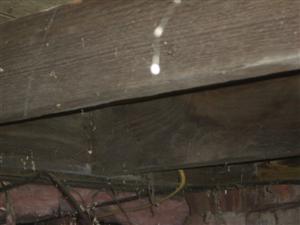 |
 | 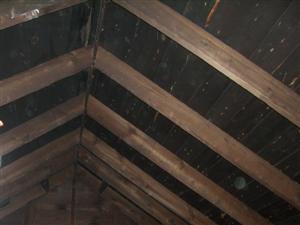 |
 |  |
| GENERAL CONDITION: Foundation and Structure: GOOD: Average condition& performance | SYSTEM INSPECTED?: Yes | Crawlspace / Basement Water& Moisture conditions: Standing water |
| FOUNDATION/STRUCTURE LIMITATIONS: Limited access to all areas | FOUNDATION TYPE: Crawlspace Basement | STRUTURE AND MATERIALS: MASONARY: BRICK FRAME: WOOD FRAME: SILL FRAME: BAND FRAME: JOISTS FRAME: GIRDERS FRAME:RAFTERS |
| Foundation ventilation: FOUNDATION VENTS | INTERIOR DRAINAGE: SUMP DUMP | EXTERIOR DRAINAGE: SITE: LEVEL Marginal or inadequate drainage |
| METHOD USED TO OBSERVE CRAWLSPACE: CRAWLED | FLOOR STRUCTURE: 2 X 8 WOOD JOISTS WOOD BEAMS | WALL STRUCTURE: 2 X 4 WOOD |
| COLUMNS OR PIERS: BRICK PIERS | VIEWED ATTIC SPACE FROM:: WALKED | CEILING STRUCTURE: 2X6 |
| ROOF STRUCTURE: 2 X 6 RAFTERS | ATTIC ACCESS: Pull down stairs | CRAWLSPACE: Basement access |
| 3.0 | FOUNDATION & STRUCTURE (Report signs of abnormal or harmful water penetration into the building or signs of abnormal settlement, structural failure, wood destroying insects & fungus.) Comments - Discrepant item, Repair or Replace, Preventative maintenance recommended | ||||||
|
|
Basement is taking on water. A sump pump has been installed but water is being improperly discharged. The water is discharged directly outside the foundation and much of it is seeping back into basement causing this continual cycle. Some errosion is being caused where there is an opening in the concrete foundation.. The discharge must be remotely located from the foundation.
Water is also being introduced by the furnace combustion condensate discharge line which dripping onto the floor. This should be diverted to a drain or directly to the sump.( Picture 6 ) There is also not gutters installed to divert roof water away from this area and others around the perimeter. Note heavy errosion and splash along foundation.( Picture 4 ) AC and Heat pump units are also directly under the roof water runoff and are getting pummeled with water. This can cause early failure of the units if they are not protected.
|
| 3.1 | FOUNDATION VENTILATION & VAPOR BARRIER Comments - Informational notes and disclosures | |
|
|
The foundation is not well ventilated and there is no vapor barrier. It does not appear to be critically needed as there is no evidence of moisture vapor issues in the crawlspace areas. However, adding moisture barrier would help ensure a healthy crawlspace by sealing in ground moisture and stabilizing ground moisture changes.
A significant amount of settlement has occurred in that rear section of structure. It appears that the back half of the house is an addition was added not long after original construction. circa 1910. This area has settled and sloped downward towards the rear. It is most obvious in the upstairs hallway and around door frames.( Picture 1 ) There was no evidence to suggest this settlement is recent or persistent and not identifiable as structural failure.
|
| 3.2 | FLOORS (Structural) Comments - Informational notes and disclosures |
|
|
Note: Secondary screw jacks have been installed as floor reinforcement under where joist have sagged. Not to be confused with foundation supports. This is OK |
| 3.3 | WALLS (Structural) Comments - Satisfactory, Functional |
| 3.4 | COLUMNS OR PIERS Comments - Preventative maintenance recommended | ||||
|
|
Mortar is failing at joints of brick piers in all locations. Mortar is turning to sand and falling from joints. These joints must be re-pointed, reinforced or otherwise replaced in order to prevent structural failure.
Some mortar minimal deterioration was observed on exterior perimeter brick ( Picture 4 ) but most has been re-pointed and is sound. This old foundation is higher maintenance. Maintain as needed.
|
| 3.5 | CEILINGS (structural) Comments - Satisfactory, Functional |
| 3.6 | ROOF STRUCTURE AND ATTIC Comments - Discrepant item, Repair or Replace | ||||||
|
|
Prior water damage and improper structural repairs have lead to significant roof sag. ( Picture 1 ) The rafters in this area became rotten and reinforcement was attempted with rafter scabs (wood splints)( Picture 2 ) . Scabbing not support and transfer the load adequately and as such is not an adequate structural repair. This roof may have been sagged before the repairs but also appears to have sagged since as evidenced by scissor appearance ( Picture 3 ) where new rafter pieces and old rafters are not flush and parallel to each other. Proper repairs normally consist of new sistered rafters and or kneewall supports. Some attempts at raising to remove the sag should be considered but this must be done slowly and carefully. Caution: there are extreme stress loads here. All work should be done by an experienced structural contractor.
Improper rafter repair at front left corner of attic. Not sistered and not flush to top plate.( Picture 5,6 )
|
| 3.7 | LOT& GRADING Comments - Satisfactory, Functional |
 |  |
 | 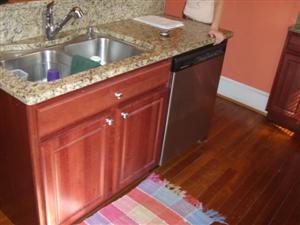 |
| GENERAL SYSTEM CONDITION: plumbing: GOOD: Average condition& performance | SYSTEM INSPECTED?: Yes | Waste system (sewage): Public sewage |
| Water supply system (potable): Public utility | Plumbing Limitations: Typically accessible areas | Main water supply pipe (street service): Copper |
| Supply pipes and distribution materials ( visable ): COPPER CPVC | Waste Piping materials (visable): PVC | Water pressure: adequate |
| Cross connects observed: No | Fixtures & faucets observed (checked for leaks & fill & drain function only): TUBS SINKS TOILETS SHOWERS | Hot water source: Electirc 50 gallon tank |
| REMAINING SERVICE LIFE of Water heater: 75% - Typical condition& minimal wear - No concern of replacement expense | Drainage at Fixtures: Adequate |
| 4.0 | INTERIOR DRAINS, SUPPLY PIPES, FIXTURES AND VENT SYSTEMS Comments - Satisfactory, Functional |
| 4.1 | INTERIOR WATER SUPPLY AND DISTRIBUTION SYSTEMS AND FIXTURES Comments - Satisfactory, Functional |
| 4.2 | HOT WATER SYSTEMS, CONTROLS, CHIMNEYS, FLUES AND VENTS Comments - Satisfactory, Functional | |
Water heater data ( Picture 1 )
|
| 4.3 | Fixtures Tubs and faucets Comments - Satisfactory, Functional | |
Toilet is loose on floor and seal. ( Picture 1 )
|
| 4.4 | MAIN WATER SHUT-OFF DEVICE (Describe location) Comments - Satisfactory, Functional |
| Street meter main water cutoff valve. |
| 4.5 | FUEL STORAGE AND DISTRIBUTION SYSTEMS (Interior fuel storage, piping, venting, supports, leaks) Comments - Satisfactory, Functional | |
gas meter( Picture 1 )
|
| 4.6 | SUMP PUMP Comments - Satisfactory, Functional |
 |  |
 |
| GENERAL SYSTEM CONDITION: Electrical: GOOD: Average condition& performance | ELECTRICAL LIMITATIONS: TYPICAL | EXTERIOR SERVICE AND METER: OVERHEAD SERVICE METER AND METER BASE |
| SERVICE ENTRY WIRING: Aluminum 2/0 | INTERIOR COMPONENTS OBSERVED: RECEPTACLES SWITCHES LIGHT FIXTURES GFCI SMOKE DETECTOR | EXTERIOR COMPONENTS OBSERVED: RECEPTACLES SWITCHES LIGHT FIXTURES |
| MAIN PANEL(s) Type & Capacity: 150 AMP | BRANCH WIRE 15 and 20 AMP: COPPER | WIRING system & material: ROMEX |
| Location of Main Panel: Interior room |
| 5.0 | SERVICE ENTRANCE WIRING Comments - Satisfactory, Functional | |
Safety: Overhead service, use caution when working with ladders and equipment. ( Picture 1 )
|
| 5.1 | MAIN SERVICE - Main panel, sub-panels, grounds & bonds, Capacities, Ratings, Overcurrent protection & distribution. Comments - Satisfactory, Functional |
| 5.2 | WIRING - Amperage & Voltage protection and compatibility of branch wiring & overcurrent devices, conductor material. ( breakers, fuses vs. size of conductors.) Comments - Satisfactory, Functional |
|
|
Original wiring was knob and tube. However, there is no evidence that it has not been fully and adequately abandoned and replaced with Romex. |
| 5.3 | EXTERIOR - wiring, polarity & grounding of fixtures, receptacles and connected devices. Comments - Satisfactory, Functional |
| 5.4 | INTERIOR - wiring, polarity & grounding of fixtures, receptacles and connected devices. Comments - Satisfactory, Functional | |
|
|
Kitchen outlet loose in box, right side of stove.( Picture 1 )
|
| 5.5 | GFCI (ground fault circuit interrupts are safety outlets in "wet area" locations. i.e. baths, garage, exterior, kitchen, etc.) Comments - Satisfactory, Functional, Informational notes and disclosures | |
|
|
Porch outlet is not GFCI. protected. "Ground fault protection saves lives"
|
| 5.6 | LOCATION OF MAIN AND DISTRIBUTION PANELS Comments - Satisfactory, Functional | |
Located in left rear bedroom open closet.
|
| 5.7 | Smoke detectors Comments - Satisfactory, Functional |
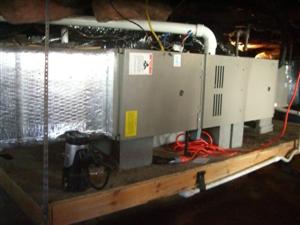 |
| GENERAL RATING: GOOD: Average condition& performance | LIMITS ON INSPECTION: TYPICAL | TYPE OF FUEL: GAS |
| EQUIPMENT LOCATION: Basement / Crawlspace | THERMOSTAT TYPE: MECHANICAL | THERMOSTAT LOCATION: Central hall |
| THERMOSTAT CONDITION: FUNCTIONAL | WARM AIR SYSTEMS: FURNANCE(HOT AIR): HORIZONTAL | FIREPLACE/FLUES: ventless gas fireplace |
| ENERGY SOURCE: NATURAL GAS | NUMBER OF HEAT SYSTEMS (excluding wood): TWO | HEAT SYSTEM BRAND: UNKNOWN generic builders grade |
| DUCTWORK: INSULATED insulated flex duct | FILTER TYPE: DISPOSABLE | OPERABLE FIREPLACES: TWO |
| NUMBER OF WOODSTOVES: NONE | REMAINING SERVICE LIFE: 75% - Typical condition& minimal wear - No concern of replacement expense |
| 6.0.A | HEATING EQUIPMENT Comments - Satisfactory, Functional, Preventative maintenance recommended | |||
|
|
Furnace data.( Picture 1 )
Poorly mounted furnace - Furnace is hanging by pipe straps fastened with nails ( Picture 2,3 ) on a particle board platform. The platform is already sagging. These suspended platforms are typically more substantial using all-thread rod and bolts for hangers and plywood with adequate framing to support the weight.
|
| 6.1.A | NORMAL OPERATING CONTROLS Comments - Satisfactory, Functional |
| 6.2.A | CHIMNEYS, FLUES AND VENTS Comments - Satisfactory, Functional | ||||||
| Rear brick flue chimney is deteriorating. It is cracked on both sides and mortar is disintegrating. Monitor this chimney for continued failure and realize that it may have to be repaired or removed. ( Picture 1,2,3 )
Front chimney is leaning, but bricks and mortar is sound. Monitor this chimney for future condition, and performance. It is very old and has a propensity for structural failure. ( Picture 4,5 ) Note: All original chimneys have been abandoned and sealed off. ( Picture 6 )
|
| 6.3.A | HEAT DISTRIBUTION SYSTEMS (including fans, pumps, ducts and piping, with supports, insulation, air filters, registers, radiators, fan coil units and convectors) Comments - Satisfactory, Functional |
| 6.4.A | GAS/LP FIRELOGS AND FIREPLACES Comments - Satisfactory, Functional | ||
| This home has 2 un-vented gas log appliances. ( Picture 1,2 )
Original chimneys have been abandoned and sealed off.
|
| 6.5.A | PRESENCE OF INSTALLED HEAT SOURCE IN EACH ROOM Comments - Satisfactory, Functional |
 |  |
| GENERAL RATING: GOOD: Average condition& performance | LIMITS ON INSPECTION: TYPICAL | TYPE OF FUEL: HEAT PUMP (FORCED AIR) |
| EQUIPMENT LOCATION: Attic Exterior | THERMOSTAT TYPE: MECHANICAL | THERMOSTAT LOCATION: Central hall |
| THERMOSTAT CONDITION: FUNCTIONAL | WARM AIR SYSTEMS: HEAT PUMP:ELECTRIC BACK UP | NUMBER OF HEAT SYSTEMS (excluding wood): TWO |
| HEAT SYSTEM BRAND: GOODMAN | DUCTWORK: INSULATED insulated flex duct | FILTER TYPE: DISPOSABLE |
| REMAINING SERVICE LIFE: 75% - Typical condition& minimal wear - No concern of replacement expense |
| 6.0.B | HEATING EQUIPMENT Comments - Satisfactory, Functional, Preventative maintenance recommended | ||||
|
|
Upstairs Heat Pump data. ( Picture 1 )
Condensate drain does not contain a vent and trap is not level and will not function as designed.( Picture 2,3 ) Significant air leaks detected at unsealed fittings, attic air handler.( Picture 4 )
|
| 6.1.B | NORMAL OPERATING CONTROLS Comments - Satisfactory, Functional, Preventative maintenance recommended |
|
|
Upstairs thermostat is loose on wall. This is type that requires level, no movement to be accurate. |
| 6.2.B | HEAT DISTRIBUTION SYSTEMS (including fans, pumps, ducts and piping, with supports, insulation, air filters, registers, radiators, fan coil units and convectors) Comments - Satisfactory, Functional | |
Supply diffuser is loose in ceiling, master bedroom.( Picture 1 )
|
| 6.3.B | SPACE HEATING Comments - Not Present |
| 6.4.B | PRESENCE OF INSTALLED HEAT SOURCE IN EACH ROOM Comments - Satisfactory, Functional |
 |
| GENERAL RATING: GOOD: Average condition& performance | LIMITS ON THE INSPECTION: TYPICAL | EQUIPMENT LOCATION: Exterior |
| THERMOSTAT TYPE: MECHANICAL | CONDITION OF THERMASTAT: FUNCTIONAL | THERMOSTAT LOCATION: see 6 heating/fireplace for thermostat |
| COOLING EQUIPMENT TYPE: CENTRAL ELECTRIC | DUCTWORK TYPE: INSULATED FLEXIBLE DUCT Shared with Heat system | FILTERS: DISPOSABLE |
| COOLING EQUIPMENT ENERGY SOURCE: ELECTRICITY | CENTRAL AIR MANUFACTURER: UNKNOWN | NUMBER OF A/C UNITS: ONE |
| REMAINING SERVICE LIFE: 75% - Typical condition& minimal wear - No concern of replacement expense |
| 7.0 | COOLING AND AIR HANDLER EQUIPMENT Comments - Satisfactory, Functional, Preventative maintenance recommended | ||||
|
|
Downstairs AC data- ( Picture 1,2,3 )
Air leaks detected at AC coil at unsealed refrigerant line penetration.( Picture 4 )
|
| 7.1 | DISTRIBUTION SYSTEMS (including fans, pumps, ducts and piping, with supports, insulation, air filters, registers, radiators, fan coil units and convectors) Comments - Satisfactory, Functional |
| 7.2 | PRESENCE OF INSTALLED COOLING SOURCE IN EACH ROOM Comments - Satisfactory, Functional |
| 7.3 | Normal Operating Controls, Thermostat Comments - Satisfactory, Functional |
| GENERAL INSULATION RATING (subjective to age of home): FAIR: Below average condition& performance | Insulation inspection limitations: TYPICAL | TYPE: FIBERGLASS |
| ATTIC INSULATION: CELLULOSE | R- VALUE: BELOW R-19 | VENTILATION: None found |
| BATH EXHAUST FAN TYPES: NONE | FLOOR INSULATION: BATT FIBERGLASS | WALL INSULATION: BATT FIBERGLASS |
| 8.0 | INSULATION AND VAPOR RETARDERS (in unfinished spaces) Comments - Discrepant item, Repair or Replace | |||||||
|
|
Attic insulation is substandard. DOE standard is R-30 which is approximately 10-12" of cellulose type. This is approx 6"deep. See 2x6 ceiling joist in photo for measure indicator.( Picture 1,2 )
Floor has been partially insulated but many areas are unfinished. ( Picture 4 ) ( Picture 6 ) ( Picture 7 ) Recommend bringing all insulation up to intended design to meet current DOE standards and the established standard of this renovation. See US Dept of Energy insulation consumer guide
|
 |  |
 | 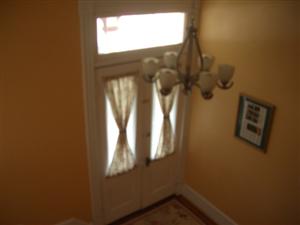 |
 |  |
 | 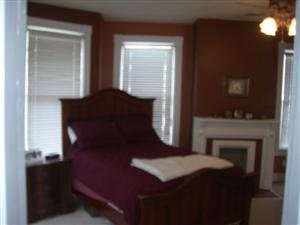 |
 | 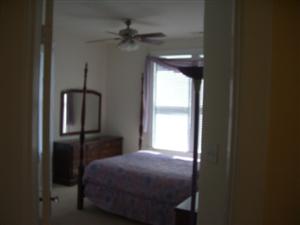 |
| GENERAL RATING: GOOD: Average condition& performance | INTERIOR LIMITATIONS: TYPICAL | APPLIANCES: DISHWASHER RANGE BURNERS OVEN ELEMENTS HOOD FANS/VENTS MICROWAVE GARBAGE DISPOSER BATH/DRYER VENTS |
| WALLS AND CEILING MATERIAL: PLASTER: WOOD LATH Sheet rock& plaster | INTERIOR OF WINDOWS: satisfactory | RAILS AND STAIRS: HAINDRAILS SAFTEY RAILS STEPS |
| FLOOR COVERING(S): CARPET TILE WOOD | INTERIOR DOORS: SOLID WOOD | CABINETRY: WOOD |
| COUNTERTOP: GRANITE | DRYER VENT: RIGID METAL |
| 9.0 | CEILINGS Comments - Satisfactory, Functional, Informational notes and disclosures | ||
|
|
Observed failed plaster keys ( Picture 1 ) in attic/ceiling over back end of house. Owners believe that the old plaster lath was covered with sheet rock. If this is the case, there should be no problems. Monitor these ceilings in this area for and cracking or sagging.
Note: front portion of house has new sheet rock visible from attic. ( Picture 2 )
|
| 9.1 | WALLS Comments - Satisfactory, Functional |
| 9.2 | FLOORS Comments - Satisfactory, Functional |
| 9.3 | STEPS, STAIRWAYS, BALCONIES AND RAILINGS Comments - Informational notes and disclosures | |
|
|
caution: Improper design at basement stairs, uneven steps, no safety rail. ( Picture 1 )
|
| 9.4 | COUNTERS AND A REPRESENTATIVE NUMBER OF CABINETS Comments - Satisfactory, Functional |
| 9.5 | DOORS (REPRESENTATIVE NUMBER) Comments - Satisfactory, Functional |
| 9.6 | WINDOWS (REPRESENTATIVE NUMBER) Comments - Satisfactory, Functional |
| 9.7 | INTERIOR INSPECTION ACCESSIBILITY Comments - Satisfactory, Functional |
| 9.8 | VENTING SYSTEMS (Kitchens, baths and laundry) Comments - Discrepant item, Repair or Replace | ||
|
|
Dryer vent is separating at seam joint and is taped with cellophane. repair as needed.( Picture 1 )
Upstairs guest bathroom is not vented, window is sealed off with plastic sheeting.
|
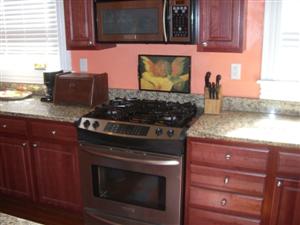 | 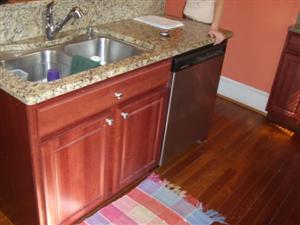 |
| GENERAL RATING: GOOD: Average condition& performance | DISHWASHER: Functional | DISPOSER: Functional |
| EXHAUST/RANGE HOOD: RE-CIRCULATE Fucntional | RANGE/OVEN: Functional | BUILT-IN MICROWAVE: Functional |
| REFRIGERATOR: Personal property- not built in -NOT INSPECTED | DRYER POWER SOURCE: 22O ELECTRIC |
| 10.0 | DISHWASHER Comments - Satisfactory, Functional |
| 10.1 | RANGES/OVENS/COOKTOPS Comments - Satisfactory, Functional |
| 10.2 | RANGE HOOD Comments - Satisfactory, Functional |
| 10.3 | FOOD WASTE DISPOSER Comments - Satisfactory, Functional |
| 10.4 | MICROWAVE COOKING EQUIPMENT Comments - Satisfactory, Functional |
|
|
757-495-2300
757.495.2300
|
Customer: removed for privacy Property Address: Linden Ave. |
This
![]() General Summary is a combined list of any and all findings that where flagged during the inspection as important. The general summary contains all the items listed in the individual summaries below.
General Summary is a combined list of any and all findings that where flagged during the inspection as important. The general summary contains all the items listed in the individual summaries below.
The following items or discoveries indicate that these systems or components do not function as intended or adversely affects the habitability of the dwelling; or appear to warrant further investigation by a specialist, or requires subsequent observation. This summary shall not contain recommendations for routine upkeep of a system or component to keep it in proper functioning condition or recommendations to upgrade or enhance the function, efficiency, or safety of the home. This Summary is not the entire report. The complete report may include additional information of concern to the customer. It is recommended that the customer read the complete report.
![]() Defects
Defects
![]() Safety & Disclosure info
Safety & Disclosure info
![]() Maintenance
Maintenance
| 1.0 | ROOF COVERINGS | |
| Discrepant item, Repair or Replace, Preventative maintenance recommended | ||
|
| ||
| 1.1 | ROOF DECKING | |
| Informational notes and disclosures, Preventative maintenance recommended | ||
|
|
Roof underlayment is deteriorating. This is the felt paper between the slate and wood decking. This can not be repaired without removal of slate. Monitor the roof decking periodically for any water or moisture intrusion.( Picture 1 ) |
|
| 1.5 | VENTILATION | |
| Informational notes and disclosures, Not Present | ||
|
|
Roof structure is not ventilated. It is highly recommended that ventilation be installed to provide balanced air flow through attic. This will reduce extreme heat loads and will reduce trapped moisture the migrates from interior. Old homes that are renovated without proper attic ventilation are susceptible to condensation rot.
Note: existing vents are sealed windows.( Picture 1 ) The rear has been sealed with wood.( Picture 1 ) |
|
| 2.0 | WALL CLADDING FLASHING AND TRIM | |
| Discrepant item, Repair or Replace, Preventative maintenance recommended | ||
|
|
Much of the clapboard siding is in need of maintenance/repair. Prior conservation was poorly done. Observed many loose boards where nails have deteriorated and let loose. paint is peeling and flaking. A significant amount of exterior wall preservation is needed. |
|
| 2.1 | DOORS (Exterior) | |
| Satisfactory, Functional, Preventative maintenance recommended | ||
|
|
Front door has poor weather seal.( Picture 1 ) |
|
| 2.2 | WINDOWS | |
| Discrepant item, Repair or Replace, Preventative maintenance recommended | ||
|
|
Many of the window sills are weathered, deteriorating and holding moisture. Maintenance and conservation in general is needed.( Picture 1 ) |
|
| 2.3 | DECKS, BALCONIES, STOOPS, STEPS, AREAWAYS, PORCHES AND APPLICABLE RAILINGS | |
| Discrepant item, Repair or Replace | ||
|
|
Front porch flooring is in generally poor condition. deteriorating, some areas have rot. Repairs and maybe replacement should be considered. |
|
| 2.4 | EAVES, SOFFITS, FASCIAS, RAKES, and EXTERIOR TRIM | |
| Discrepant item, Repair or Replace, Preventative maintenance recommended | ||
|
|
Multiple areas of weathering, rot and deterioration where observed. Mostly small sections in multiple areas of window and porch trim. Repair or replace in all areas as needed. |
|
| 3.0 | FOUNDATION & STRUCTURE (Report signs of abnormal or harmful water penetration into the building or signs of abnormal settlement, structural failure, wood destroying insects & fungus.) | |
| Discrepant item, Repair or Replace, Preventative maintenance recommended | ||
|
|
Basement is taking on water. A sump pump has been installed but water is being improperly discharged. The water is discharged directly outside the foundation and much of it is seeping back into basement causing this continual cycle. Some errosion is being caused where there is an opening in the concrete foundation.. The discharge must be remotely located from the foundation.
Water is also being introduced by the furnace combustion condensate discharge line which dripping onto the floor. This should be diverted to a drain or directly to the sump.( Picture 6 ) There is also not gutters installed to divert roof water away from this area and others around the perimeter. Note heavy errosion and splash along foundation.( Picture 4 ) AC and Heat pump units are also directly under the roof water runoff and are getting pummeled with water. This can cause early failure of the units if they are not protected. |
|
| 3.1 | FOUNDATION VENTILATION & VAPOR BARRIER | |
| Informational notes and disclosures | ||
|
|
The foundation is not well ventilated and there is no vapor barrier. It does not appear to be critically needed as there is no evidence of moisture vapor issues in the crawlspace areas. However, adding moisture barrier would help ensure a healthy crawlspace by sealing in ground moisture and stabilizing ground moisture changes.
A significant amount of settlement has occurred in that rear section of structure. It appears that the back half of the house is an addition was added not long after original construction. circa 1910. This area has settled and sloped downward towards the rear. It is most obvious in the upstairs hallway and around door frames.( Picture 1 ) There was no evidence to suggest this settlement is recent or persistent and not identifiable as structural failure. |
|
| 3.2 | FLOORS (Structural) | |
| Informational notes and disclosures | ||
|
|
Note: Secondary screw jacks have been installed as floor reinforcement under where joist have sagged. Not to be confused with foundation supports. This is OK |
|
| 3.4 | COLUMNS OR PIERS | |
| Preventative maintenance recommended | ||
|
|
Mortar is failing at joints of brick piers in all locations. Mortar is turning to sand and falling from joints. These joints must be re-pointed, reinforced or otherwise replaced in order to prevent structural failure.
Some mortar minimal deterioration was observed on exterior perimeter brick ( Picture 4 ) but most has been re-pointed and is sound. This old foundation is higher maintenance. Maintain as needed. |
|
| 3.6 | ROOF STRUCTURE AND ATTIC | |
| Discrepant item, Repair or Replace | ||
|
|
Prior water damage and improper structural repairs have lead to significant roof sag. ( Picture 1 ) The rafters in this area became rotten and reinforcement was attempted with rafter scabs (wood splints)( Picture 2 ) . Scabbing not support and transfer the load adequately and as such is not an adequate structural repair. This roof may have been sagged before the repairs but also appears to have sagged since as evidenced by scissor appearance ( Picture 3 ) where new rafter pieces and old rafters are not flush and parallel to each other. Proper repairs normally consist of new sistered rafters and or kneewall supports. Some attempts at raising to remove the sag should be considered but this must be done slowly and carefully. Caution: there are extreme stress loads here. All work should be done by an experienced structural contractor.
Improper rafter repair at front left corner of attic. Not sistered and not flush to top plate.( Picture 5,6 ) |
|
| 5.5 | GFCI (ground fault circuit interrupts are safety outlets in "wet area" locations. i.e. baths, garage, exterior, kitchen, etc.) | |
| Satisfactory, Functional, Informational notes and disclosures | ||
|
|
Porch outlet is not GFCI. protected. "Ground fault protection saves lives" |
|
| 6.0.A | HEATING EQUIPMENT | |
| Satisfactory, Functional, Preventative maintenance recommended | ||
|
|
Furnace data.( Picture 1 )
Poorly mounted furnace - Furnace is hanging by pipe straps fastened with nails ( Picture 2,3 ) on a particle board platform. The platform is already sagging. These suspended platforms are typically more substantial using all-thread rod and bolts for hangers and plywood with adequate framing to support the weight. |
|
| 6.0.B | HEATING EQUIPMENT | |
| Satisfactory, Functional, Preventative maintenance recommended | ||
|
|
Upstairs Heat Pump data. ( Picture 1 )
Condensate drain does not contain a vent and trap is not level and will not function as designed.( Picture 2,3 ) Significant air leaks detected at unsealed fittings, attic air handler.( Picture 4 ) |
|
| 6.1.B | NORMAL OPERATING CONTROLS | |
| Satisfactory, Functional, Preventative maintenance recommended | ||
|
|
Upstairs thermostat is loose on wall. This is type that requires level, no movement to be accurate. |
|
| 7.0 | COOLING AND AIR HANDLER EQUIPMENT | |
| Satisfactory, Functional, Preventative maintenance recommended | ||
|
|
Downstairs AC data- ( Picture 1,2,3 )
Air leaks detected at AC coil at unsealed refrigerant line penetration.( Picture 4 ) |
|
| 8.0 | INSULATION AND VAPOR RETARDERS (in unfinished spaces) | |
| Discrepant item, Repair or Replace | ||
|
|
Attic insulation is substandard. DOE standard is R-30 which is approximately 10-12" of cellulose type. This is approx 6"deep. See 2x6 ceiling joist in photo for measure indicator.( Picture 1,2 )
Floor has been partially insulated but many areas are unfinished. ( Picture 4 ) ( Picture 6 ) ( Picture 7 ) Recommend bringing all insulation up to intended design to meet current DOE standards and the established standard of this renovation. See US Dept of Energy insulation consumer guide |
|
| 9.0 | CEILINGS | |
| Satisfactory, Functional, Informational notes and disclosures | ||
|
|
Observed failed plaster keys ( Picture 1 ) in attic/ceiling over back end of house. Owners believe that the old plaster lath was covered with sheet rock. If this is the case, there should be no problems. Monitor these ceilings in this area for and cracking or sagging.
Note: front portion of house has new sheet rock visible from attic. ( Picture 2 ) |
|
| 9.3 | STEPS, STAIRWAYS, BALCONIES AND RAILINGS | |
| Informational notes and disclosures | ||
|
|
caution: Improper design at basement stairs, uneven steps, no safety rail. ( Picture 1 ) |
|
| 9.8 | VENTING SYSTEMS (Kitchens, baths and laundry) | |
| Discrepant item, Repair or Replace | ||
|
|
Dryer vent is separating at seam joint and is taped with cellophane. repair as needed.( Picture 1 )
Upstairs guest bathroom is not vented, window is sealed off with plastic sheeting. |
|
757-495-2300
757.495.2300
Customer:
removed for privacy Property Address: Linden Ave. This section is a summary list of defective components, systems, or workmanship that may need repair or replacement in order to restore to intended function or to a level of what's considered "good repair".
Roof is sagged at left side between chimney and gable. See structure notes.( Picture 4 ) Where roof has sagged, some shingles are lifting, repair as needed.( Picture 4 ) Note: a large section of roofing was replaced with synthetic slate (vinyl). These shingles are already starting to lift. They will not perform the same as slate and will require monitoring for repairs.( Picture 5 ) Water is also being introduced by the furnace combustion condensate discharge line which dripping onto the floor. This should be diverted to a drain or directly to the sump.( Picture 6 ) There is also not gutters installed to divert roof water away from this area and others around the perimeter. Note heavy errosion and splash along foundation.( Picture 4 ) AC and Heat pump units are also directly under the roof water runoff and are getting pummeled with water. This can cause early failure of the units if they are not protected. Improper rafter repair at front left corner of attic. Not sistered and not flush to top plate.( Picture 5,6 ) Floor has been partially insulated but many areas are unfinished. ( Picture 4 ) ( Picture 6 ) ( Picture 7 ) Recommend bringing all insulation up to intended design to meet current DOE standards and the established standard of this renovation. Upstairs guest bathroom is not vented, window is sealed off with plastic sheeting.
757-495-2300
757.495.2300
Customer:
removed for privacy Property Address: Linden Ave. This section is a summary list of informational disclosures. These items may not be considered an obvious or repairable defect but may be an inherent problem to the home. They are listed here as they may have important consequences regarding your purchase. The items listed here are typically safety issues, environmental concerns, Antiquated systems and equipment, Building material/systems manufacturer deficiencies or recalls.
Note: existing vents are sealed windows.( Picture 1 ) The rear has been sealed with wood.( Picture 1 ) A significant amount of settlement has occurred in that rear section of structure. It appears that the back half of the house is an addition was added not long after original construction. circa 1910. This area has settled and sloped downward towards the rear. It is most obvious in the upstairs hallway and around door frames.( Picture 1 ) There was no evidence to suggest this settlement is recent or persistent and not identifiable as structural failure. Note: front portion of house has new sheet rock visible from attic. ( Picture 2 )
757-495-2300
757.495.2300
Customer:
removed for privacy Property Address: Linden Ave. This section is a summary of maintenance needed or preventative maintenance recommended in order to maintain a level of "good repair".
Roof is sagged at left side between chimney and gable. See structure notes.( Picture 4 ) Where roof has sagged, some shingles are lifting, repair as needed.( Picture 4 ) Note: a large section of roofing was replaced with synthetic slate (vinyl). These shingles are already starting to lift. They will not perform the same as slate and will require monitoring for repairs.( Picture 5 ) Water is also being introduced by the furnace combustion condensate discharge line which dripping onto the floor. This should be diverted to a drain or directly to the sump.( Picture 6 ) There is also not gutters installed to divert roof water away from this area and others around the perimeter. Note heavy errosion and splash along foundation.( Picture 4 ) AC and Heat pump units are also directly under the roof water runoff and are getting pummeled with water. This can cause early failure of the units if they are not protected. Some mortar minimal deterioration was observed on exterior perimeter brick ( Picture 4 ) but most has been re-pointed and is sound. This old foundation is higher maintenance. Maintain as needed. Poorly mounted furnace - Furnace is hanging by pipe straps fastened with nails ( Picture 2,3 ) on a particle board platform. The platform is already sagging. These suspended platforms are typically more substantial using all-thread rod and bolts for hangers and plywood with adequate framing to support the weight. Condensate drain does not contain a vent and trap is not level and will not function as designed.( Picture 2,3 ) Significant air leaks detected at unsealed fittings, attic air handler.( Picture 4 ) Air leaks detected at AC coil at unsealed refrigerant line penetration.( Picture 4 )
Defects, Repair or Replace

Final Analysis Home Inspections
Portsmouth, VA 23704
1.0
ROOF COVERINGS
Discrepant item, Repair or Replace, Preventative maintenance recommended
![]()
![]()
2.0
WALL CLADDING FLASHING AND TRIM
Discrepant item, Repair or Replace, Preventative maintenance recommended
![]()
![]()
2.2
WINDOWS
Discrepant item, Repair or Replace, Preventative maintenance recommended
![]()
![]()
2.3
DECKS, BALCONIES, STOOPS, STEPS, AREAWAYS, PORCHES AND APPLICABLE RAILINGS
Discrepant item, Repair or Replace
![]()
2.4
EAVES, SOFFITS, FASCIAS, RAKES, and EXTERIOR TRIM
Discrepant item, Repair or Replace, Preventative maintenance recommended
![]()
![]()
3.0
FOUNDATION & STRUCTURE (Report signs of abnormal or harmful water penetration into the building or signs of abnormal settlement, structural failure, wood destroying insects & fungus.)
Discrepant item, Repair or Replace, Preventative maintenance recommended
![]()
![]()
3.6
ROOF STRUCTURE AND ATTIC
Discrepant item, Repair or Replace
![]()
5.4
INTERIOR - wiring, polarity & grounding of fixtures, receptacles and connected devices.
Satisfactory, Functional
![]()
8.0
INSULATION AND VAPOR RETARDERS (in unfinished spaces)
Discrepant item, Repair or Replace
![]()
9.3
STEPS, STAIRWAYS, BALCONIES AND RAILINGS
Informational notes and disclosures
![]()
![]()
9.8
VENTING SYSTEMS (Kitchens, baths and laundry)
Discrepant item, Repair or Replace
![]()
Important Information and Disclosures

Final Analysis Home Inspections
Portsmouth, VA 23704
1.1
ROOF DECKING
Informational notes and disclosures, Preventative maintenance recommended
![]()
![]()
1.5
VENTILATION
Informational notes and disclosures, Not Present
![]()
3.1
FOUNDATION VENTILATION & VAPOR BARRIER
Informational notes and disclosures
![]()
3.2
FLOORS (Structural)
Informational notes and disclosures
![]()
5.2
WIRING - Amperage & Voltage protection and compatibility of branch wiring & overcurrent devices, conductor material. ( breakers, fuses vs. size of conductors.)
Satisfactory, Functional
![]()
5.5
GFCI (ground fault circuit interrupts are safety outlets in "wet area" locations. i.e. baths, garage, exterior, kitchen, etc.)
Satisfactory, Functional, Informational notes and disclosures
![]()
9.0
CEILINGS
Satisfactory, Functional, Informational notes and disclosures
![]()
9.3
STEPS, STAIRWAYS, BALCONIES AND RAILINGS
Informational notes and disclosures
![]()
![]()
Maintenance recommendations

Final Analysis Home Inspections
Portsmouth, VA 23704
1.0
ROOF COVERINGS
Discrepant item, Repair or Replace, Preventative maintenance recommended
![]()
![]()
1.1
ROOF DECKING
Informational notes and disclosures, Preventative maintenance recommended
![]()
![]()
2.0
WALL CLADDING FLASHING AND TRIM
Discrepant item, Repair or Replace, Preventative maintenance recommended
![]()
![]()
2.1
DOORS (Exterior)
Satisfactory, Functional, Preventative maintenance recommended
![]()
2.2
WINDOWS
Discrepant item, Repair or Replace, Preventative maintenance recommended
![]()
![]()
2.4
EAVES, SOFFITS, FASCIAS, RAKES, and EXTERIOR TRIM
Discrepant item, Repair or Replace, Preventative maintenance recommended
![]()
![]()
3.0
FOUNDATION & STRUCTURE (Report signs of abnormal or harmful water penetration into the building or signs of abnormal settlement, structural failure, wood destroying insects & fungus.)
Discrepant item, Repair or Replace, Preventative maintenance recommended
![]()
![]()
3.4
COLUMNS OR PIERS
Preventative maintenance recommended
![]()
6.0.A
HEATING EQUIPMENT
Satisfactory, Functional, Preventative maintenance recommended
![]()
6.0.B
HEATING EQUIPMENT
Satisfactory, Functional, Preventative maintenance recommended
![]()
6.1.B
NORMAL OPERATING CONTROLS
Satisfactory, Functional, Preventative maintenance recommended
![]()
7.0
COOLING AND AIR HANDLER EQUIPMENT
Satisfactory, Functional, Preventative maintenance recommended
![]()
~ End of Report ~
Roof is sagged at left side between chimney and gable. See structure notes.( Picture 4 )
Where roof has sagged, some shingles are lifting, repair as needed.( Picture 4 )
Note: a large section of roofing was replaced with synthetic slate (vinyl). These shingles are already starting to lift. They will not perform the same as slate and will require monitoring for repairs.( Picture 5 )